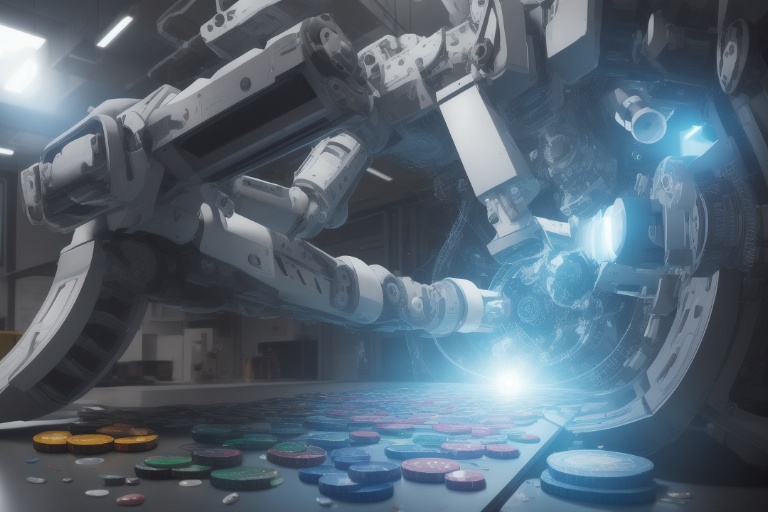Artificial Intelligence (AI) is reshaping our world in countless ways, and one of its pivotal roles is in enhancing workplace safety and compliance. The advent of AI has opened exciting opportunities for organizations to identify potential hazards before they escalate, thereby safeguarding employees and promoting a culture of proactive safety management.
Artificial Intelligence (AI) is reshaping our world in countless ways, and one of its pivotal roles is in enhancing workplace safety and compliance. The advent of AI has opened exciting opportunities for organizations to identify potential hazards before they escalate, thereby safeguarding employees and promoting a culture of proactive safety management.
AI-Driven Hazard Identification
One of the foremost ways AI contributes to workplace safety is through its capability to recognize risks preemptively. Traditional approaches depend on human observation and experience, which, while valuable, can miss subtle cues that AI can detect. Machine learning algorithms, fed with historical data, can discern patterns and red flags that may allude to potential dangers. By doing so, businesses can address these issues promptly to prevent accidents and injuries.
Automation and Reduction of Human Error
Moreover, AI can significantly cut down on human error—a major contributor to workplace accidents. Through automation of repetitive and hazardous tasks, AI systems can perform with consistent accuracy, freeing up human employees to focus on more complex and engaging work that requires human judgment and creativity. By reducing the need to perform monotonous tasks, workers are less likely to become distracted or fatigued, further minimizing the prospects for errors.
Real-Time Feedback and Training Enhancement
AI's ability to provide instant feedback is another crucial benefit for workplace safety. Wearable AI devices and smart sensors can offer real-time alerts to workers if they are in an unsafe situation or deviating from established safety protocols. This immediate response not only corrects potentially dangerous behavior but also fosters a learning environment where workers become more attuned to safety best practices.
In parallel, virtual reality (VR) training simulations powered by AI give employees the opportunity to practice in lifelike scenarios without the associated risk of harm. These simulated environments can be tailored to replicate specific job sites and risks, offering a dynamic and impactful learning experience. This convergence of VR and AI ensures that training is both engaging and educative, engraining safety skills that translate directly to real-life situations.
Development of New Safety Technologies
AI is also at the forefront of crafting novel safety technologies. By analyzing vast amounts of data, AI can aid in designing equipment and protocols that are inherently safer. From smart personal protective equipment (PPE) that adapts to changing conditions to advanced emergency response systems, AI is piloting a new era of innovation in occupational health and safety.
However, the potential of AI to revolutionize workplace safety can only be realized if organizations are willing to invest in the necessary infrastructure and data analytics capabilities. This may entail forging partnerships with firms specializing in AI for workplace safety and committing to a culture that prioritizes data-driven decision-making.
A Safer Future with AI
As we look to the future, the imperative for organizations is clear: adapt and embrace the possibilities AI presents for workplace safety. From large corporations to small enterprises, AI can offer scalable solutions that protect employees and help maintain operational continuity. The fusion of advanced AI analytics with a dedicated human workforce can lead to a safer workplace, reducing incidents and ensuring compliance.
With responsible implementation and a commitment to continuous improvement, the integration of AI into safety procedures will set a new standard in occupational health. This advance not only safeguards individuals but also bolsters the financial viability of businesses by mitigating risk and enhancing productivity. As AI technology evolves, staying abreast of the latest trends and investing in safety-centric AI applications will be critical for businesses aiming to protect their workforce and thrive in a competitive landscape.
In summary, the infusion of AI into workplace safety protocols presents an opportunity for a fundamental transformation. By leveraging the predictive power of AI, the precision of automation, the immediacy of real-time feedback, and the innovation in safety technology development, we can envision a future where workplace hazards are significantly reduced. It's a future where proactive measures define safety standards, and where organizations take the lead in protecting their most valuable asset—their people. As the potential for AI in enhancing workplace safety becomes increasingly evident, it's essential for decision-makers to embrace this transformational technology and spearhead a safer, more compliant, and innovative working environment.
Information for this article was gathered from the following source.




